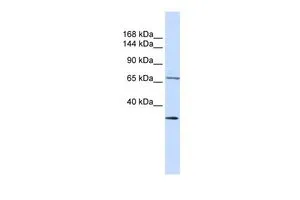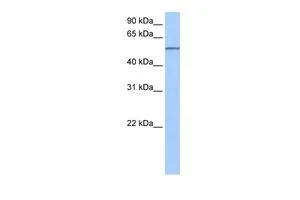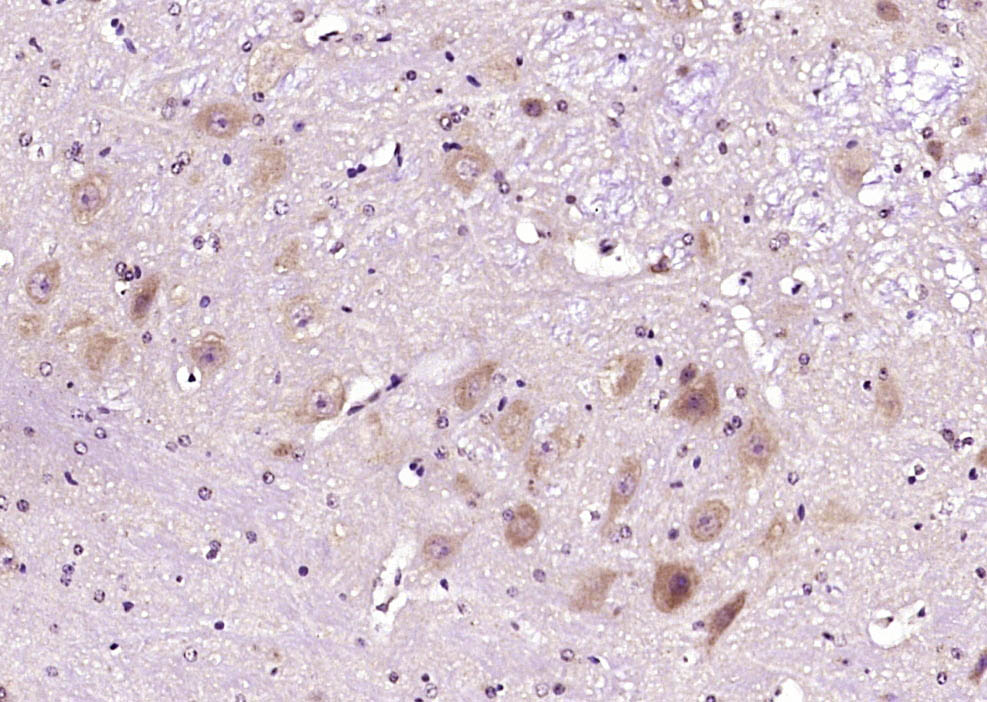
WB analysis of human B lymphoblast cells using GTX46038 SEMA6D antibody at 0.2-1microg/ml.
SEMA6D antibody, N-term
GTX46038
ApplicationsWestern Blot
Product group Antibodies
TargetSEMA6D
Overview
- SupplierGeneTex
- Product NameSEMA6D antibody, N-term
- Delivery Days Customer9
- Application Supplier NoteWB: 0.2-2.5 ug/ml. *Optimal dilutions/concentrations should be determined by the researcher.Not tested in other applications.
- ApplicationsWestern Blot
- CertificationResearch Use Only
- ClonalityPolyclonal
- Concentration0.5-1 mg/ml
- ConjugateUnconjugated
- Gene ID80031
- Target nameSEMA6D
- Target descriptionsemaphorin 6D
- Target synonymssemaphorin-6D, sema domain, transmembrane domain (TM), and cytoplasmic domain, (semaphorin) 6D
- HostRabbit
- IsotypeIgG
- Protein IDQ8NFY4
- Protein NameSemaphorin-6D
- Scientific DescriptionSemaphorins are a large family, including both secreted and membrane associated proteins, many of which have been implicated as inhibitors or chemorepellents in axon pathfinding, fasciculation and branching, and target selection. All semaphorins possess a semaphorin (Sema) domain and a PSI domain (found in plexins, semaphorins and integrins) in the N-terminal extracellular portion. Additional sequence motifs C-terminal to the semaphorin domain allow classification into distinct subfamilies. Results demonstrate that transmembrane semaphorins, like the secreted ones, can act as repulsive axon guidance cues. This gene encodes a class 6 vertebrate transmembrane semaphorin that demonstrates alternative splicing. Several transcript variants have been identified and expression of the distinct encoded isoforms is thought to be regulated in a tissue- and development-dependent manner. [provided by RefSeq, Nov 2010]
- Storage Instruction-20°C or -80°C,2°C to 8°C
- UNSPSC12352203





